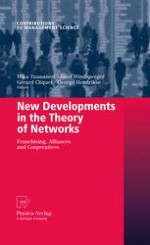2011 | OriginalPaper | Chapter
Incentives and Control in Company-Owned Versus Franchised Outlets: An Empirical Study at the Chain Level
Authors : Didier Chabaud, Arnaud Lavit d’ Hautefort, Stéphane Saussier
Published in: New Developments in the Theory of Networks
Publisher: Physica-Verlag HD
Activate our intelligent search to find suitable subject content or patents.
Select sections of text to find matching patents with Artificial Intelligence. powered by
Select sections of text to find additional relevant content using AI-assisted search. powered by
